Isolated bacteria from the hepatopancreas tissues of shrimp and sent to Japan
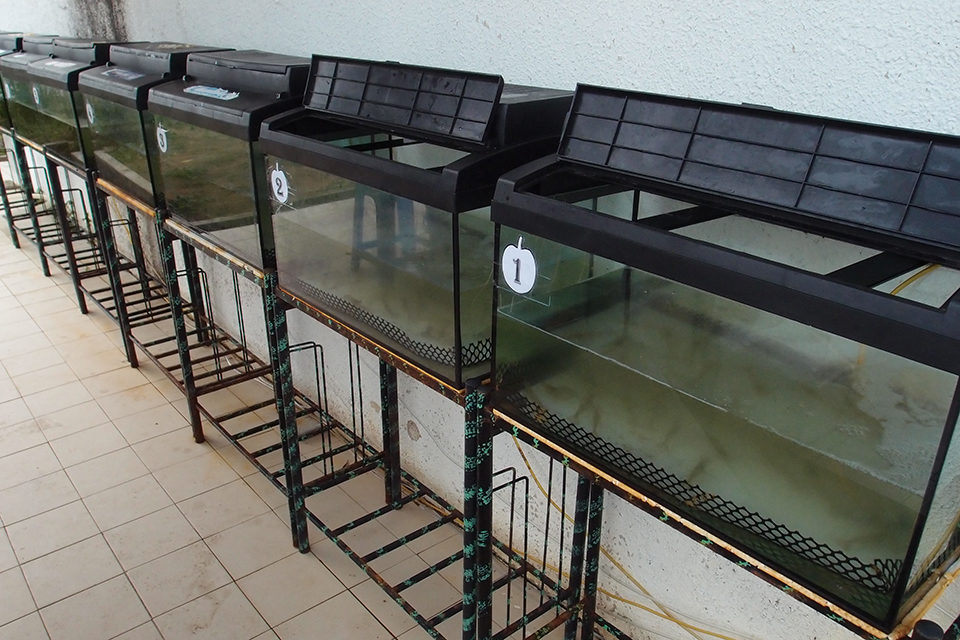
Agrobest Sdn. Bhd. is a large integrated shrimp farm located in the state of Pahang, Malaysia. It consists of 461 plastic-lined ponds with an average area of 0.75 ha. In 2010, the farm produced approximately 11,000 metric tons (MT) of Pacific white shrimp (Litopenaeus vannamei) and 500 MT of black tiger shrimp (Penaeus monodon).
Early mortality syndrome, also known as acute hepatopancreatic necrosis syndrome (AHPNS), appeared at Agrobest in early January 2011 in five ponds that were stocked with postlarvae from the same hatchery about one month earlier.
While the disease appeared to originate from this hatchery, not all ponds stocked with postlarvae from that hatchery were affected. The plankton blooms in the five affected ponds were an unusual color – dark green, almost black, which is more typically seen at the end of a production cycle. Environmental factors appeared to have a role in the manifestation of the disease.
Radiating expansion
Within one week after the outbreak in the first five ponds, several neighboring ponds were affected with the disease. Within two months, it had spread throughout the farm. Typical mortality in the affected ponds was 70 to 80 percent, and all ages and sizes of shrimp were affected.
Based on the radial outward expansion of the disease from the initial epicenter, it appeared to be caused by a virulent pathogen, but repeated tests for all known viruses were negative. Shrimp production at Agrobest fell dramatically, as it did throughout Malaysia. Research on the AHPNS problem was quickly ramped up.
Environmental interaction?
In an initial trial, stressed shrimp from an affected pond were transferred to aquaria with clean pond water. During the morning of their transfer, the shrimp were severely stressed, exhibited opaque muscle tissue and were inactive on the bottom. High mortality was expected.
However, by that afternoon, the shrimp in the aquaria had recovered normal coloration and activity. They continued to behave normally for an additional week, when the trial was discontinued.
In a second trial, non-infected shrimp were transferred to aquaria with water from a pond experiencing a die off from AHPNS. The shrimp remained unaffected, indicating that pond water in itself was not necessarily infective.
In a third trial, fresh dead shrimp from an infected pond were put in aquaria with non-infected shrimp. In some of the aquaria, the dead shrimp were placed in cages immersed in the aquaria that kept the dead animals from the live shrimp. There was no mortality in aquaria with caged dead shrimp, but mortality commenced in one or two days in aquaria that received dead shrimp outside cages. This indicated the pathogen could be transmitted through direct exposure to dead shrimp.
Despite the widespread outbreak at Agrobest, some ponds remained unaffected, which supported the hypothesis of environmental interaction with the disease. To better understand and manage the AHPNS, the Agrobest team intensified its collection of environmental data from each pond and teamed up with researchers at Kinki University in Japan to isolate, purify and sequence the DNA of the pathogen.
A review of water quality data from approximately 80 affected and unaffected ponds stocked during the same month indicated several water quality differences that were correlated with outbreaks. To determine whether any of these correlated conditions might influence the expression of AHPNS, additional aquarium trials were implemented.
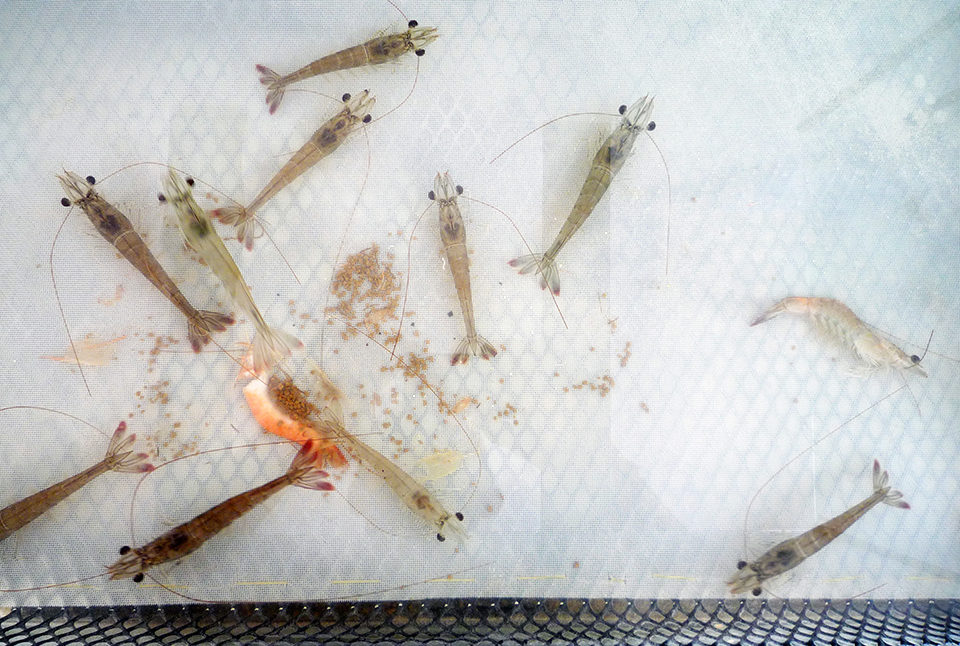
Environmental trigger
Suspected water quality triggers within affected ponds were investigated by maintaining water quality parameters in the aquaria within specific ranges. These trials were successful in identifying pH as a key environmental trigger. At lower pH (around 7), the disease repeatedly regressed, while at higher pH (8.5 to 8.8), it repeatedly manifested.
To further validate this finding, infected shrimp were placed in aquaria filled with water from ponds that were yielding excellent harvests. The water quality in these ponds was assumed to be suitable for avoiding AHPNS. In aquaria where the pH was manipulated into the suspected zone of AHPNS vulnerability, mortality was induced. However, in aquaria where water quality was maintained outside the zone of vulnerability, symptoms were not observed.
Histopathology, microbiology, transmission
The ability of the Agrobest team to control the expression of AHPNS enabled further collaborative research on the histopathology, DNA sequencing and transmission of the disease. Histopathology of infected shrimp by the National Research Institute of Aquaculture (NRIA) in Japan indicated dysfunction of the hepatopancreas and characteristic sloughing of tubule cells. Microsporidia also multiplied in the hepatopancreas organs of infected animals. The hepatopancreas tissues of non-infected shrimp and those maintained in the safe zone during aquarium trials remained normal without multiplication of bacteria and microsporidians.
To determine the DNA sequence of bacterial pathogens, the Agrobest team isolated bacteria from the hepatopancreas tissues of shrimp and sent the isolated colonies to Japan, where researchers from Kinki University and the National Research Institute of Aquaculture amplified and sequenced the DNA using polymerase chain reaction primers that target 16S rDNA sequences of bacteria. In a similar way, researchers from Kinki University and NRIA examined pond water and sludge from infected and non-infected ponds by amplifying the DNA with 16S rDNA primers followed by differentiation using denaturing gradient gel electrophoresis.
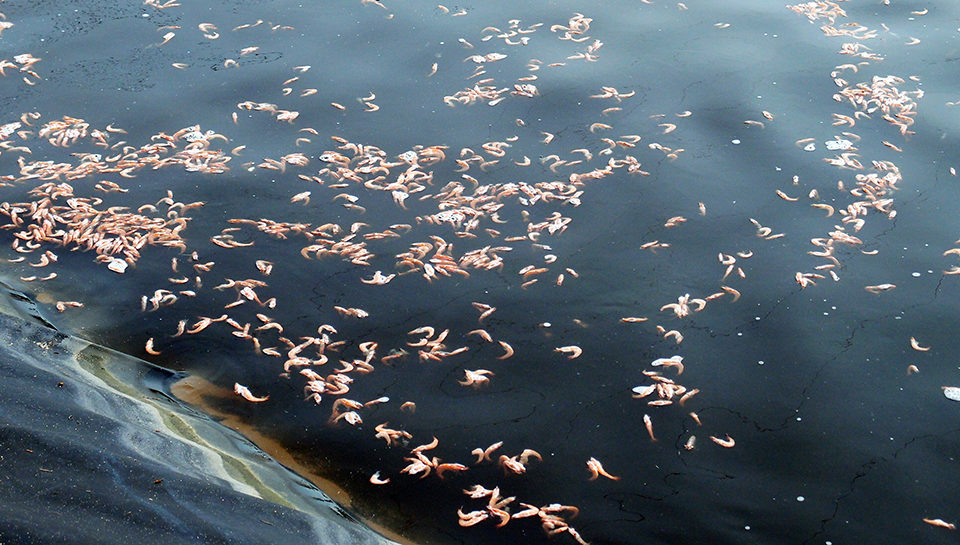
Several types of bacteria were identified from shrimp, pond water and sludge from infected and non-infected ponds. Vibrio was the most common genus, and one of the species seemed to correspond to V. parahaemolyticus, but this has not been finalized. No major differences in bacterial prevalence or distribution were found between infected and non-infected ponds. This supported the hypothesis that AHPNS bacteria were present throughout the farm, but only shrimp in ponds exposed to AHPNS-susceptible environmental conditions manifested the disease.
In aquarium studies, infected shrimp exhibited abnormal behavior that led to cannibalism by non-infected shrimp, despite the presence of pelleted feeds in the aquaria. Once the cannibalism began, the mortality of non-infected shrimp rapidly increased. Thus, cannibalism was considered a major mechanism for transmission of AHPNS in ponds.
Once initially established at the farm, AHPNS reappeared in subsequent production cycles, despite the use of a variety of postlarvae suppliers, reduction in stocking density from 120 to 85 per square meter, chlorination of seawater and virtually zero water exchange.
In 2012, pond management efforts were directed toward maintaining water quality outside the AHPNS-susceptible zone. Encouraging results were achieved, and the typical mortality range of 70 to 80 percent declined to 20 to 30 percent. However, during the fall of 2012, a relapse in mortality occurred in conjunction with a shipment of feed with poor water stability. After correcting this issue, productivity improvements resumed.
(Editor’s Note: This article was originally published in the July/August 2013 print edition of the Global Aquaculture Advocate.)
Authors
-
Noriaki Akazawa
Agrobest Malaysia Sdn. Bhd.
Batu 20, Jalan Pekan-Nenasi
26680 Pekan, Pahang, Malaysia[112,106,46,111,99,46,111,111,104,97,121,64,53,48,97,110,98,103,97]
-
Mitsuru Eguchi
Kinki University
Nara, Japan
Tagged With
Related Posts

Responsibility
A look at various intensive shrimp farming systems in Asia
The impact of diseases led some Asian shrimp farming countries to develop biofloc and recirculation aquaculture system (RAS) production technologies. Treating incoming water for culture operations and wastewater treatment are biosecurity measures for disease prevention and control.
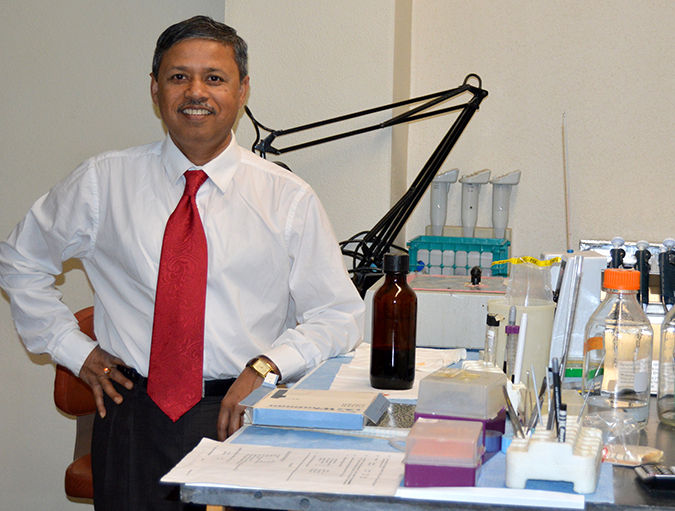
Health & Welfare
Big shoes to fill: Dhar takes reins at shrimp pathology laboratory
Arun Dhar, Ph.D. will attempt to fill the “big shoes” of Dr. Donald Lightner at the University of Arizona’s Aquaculture Pathology Laboratory, where the shrimp disease EMS was diagnosed.
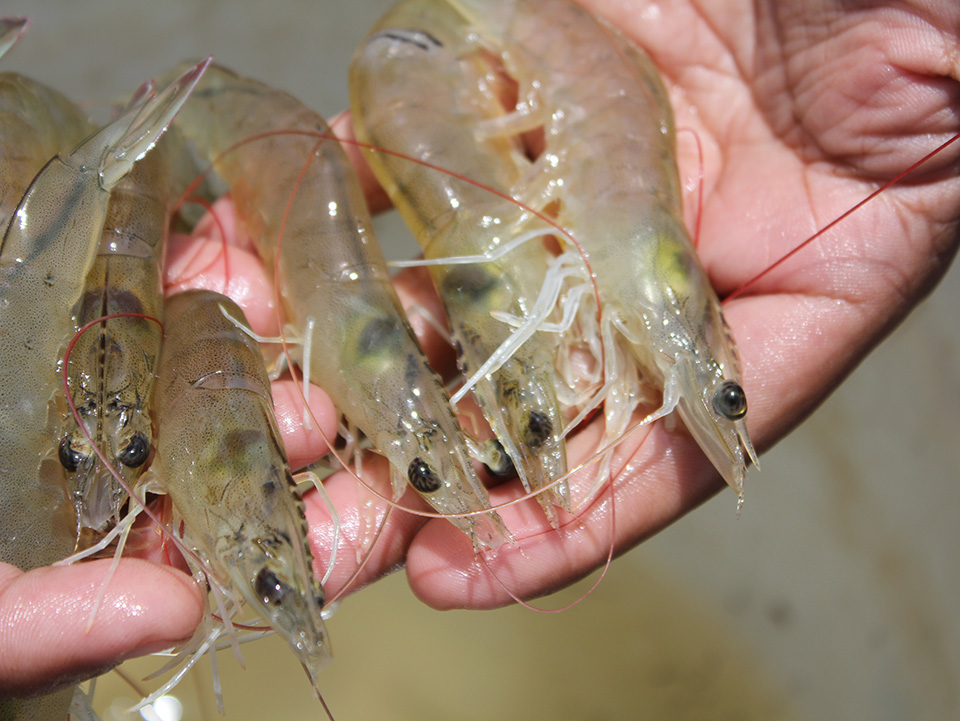
Intelligence
EMS impacts: Disease shifts shrimp supplies, prices, future production
Early mortality syndrome (EMS) has led to reduced production in major Asian shrimp-farming areas and resulted in higher prices for shrimp. The situation provides opportunities for low-intensity producers in Latin America and other traditionally secondary shrimp producers to expand output and fill the supply void.
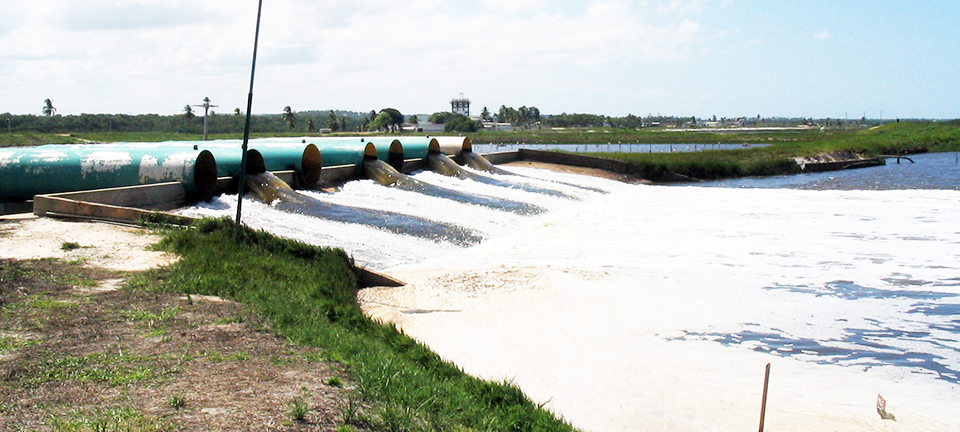
Health & Welfare
Common-sense biosecurity measures head off crop failures
Biosecurity can be defined as the operating procedures that shrimp hatchery and farm personnel use to minimize the impacts of disease on their animals. Proper biosecurity measures slow the movement of pathogens and protect unaffected areas.


